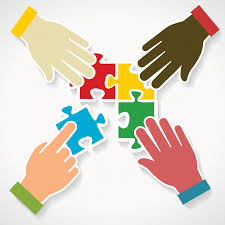
Differences
By Anthony Casperson
3-25-17
My very first foray into the Fire Emblem video game series was Fire Emblem: Radiant Dawn, sequel to the very popular Fire Emblem: Path of Radiance (which I then went back to play). In this tactical role-playing game series, you control a vast army of people on a map to complete the map’s goal (usually routing the enemy). As the story progresses, you continue to grow your army, fighting on numerous maps.
But one of the things that Radiant Dawn did that none of the other games in the series that I’ve played (and I certainly haven’t played all of them) did is give you multiple perspectives. At first, you control a small group of people fighting to free their country. Later, you switch to a completely different group of people in another country, dealing with their problems. And even later, you follow a mercenary band (the main characters of the previous game) as they take to war against the very first group of people you controlled at the beginning of the game.
As you get to this part of the game, you constantly change perspective, taking on the role of armies from both sides of the war. On one map you fight on one side of the war. Then on the next, you fight against those characters whom you’ve leveled up purposefully as characters on the other side of the war.
Tensions rising through the war, a being of order personified steps in and tries to make every living being into a statue, who can never make war again. Heroes on all sides are left to band together to put an end to stop this being. They have to lay aside their differences, their nationalities, their races, their political agendas. There’s a goal before them to save the world, and they can’t do it unless they do it together.
Recently, I experienced something that very much reminded me of this part of Radiant Dawn. This past Sunday was the crescendo of a week-long gathering of four neighboring churches to serve together in our community. Each night that week, members of all four churches tackled various needs in our community together. And on Sunday we gathered for a joint service.
Four different churches. Three different denominations. African-Americans, Asians, Caucasians, Hispanics, Pacific Islanders, the colors of the melanin rainbow represented among us all. We joined to praise God for the work that he’d been doing in us, through us, and among us.
People with many different perspectives, different ideologies, different theologies. If this group of people were to be stereotyped, we should have been at each other’s throats, yelling and screaming, hating each other. But our time gathered together reminded us that, despite our differences, we have a goal before us to save the world. And we can’t do it alone.
But how does this unity amidst diversity work? What’s the key to make this happen? The simplest answer is God. And the next simplest is love. But since those seem like trite answers, I decided to write a quick list of six things to do in order to work amidst differences.
1. Rally around what you agree on.
Even people with major differences of opinion agree on something. It might not be a lot, but there’s got to be something. Celebrating these areas of harmony allows us to have a foundation on which to build relationship.
For followers of Jesus this foundation is: the truth of the bible that the God-man came in the flesh to bring right relationship to all who accept his sacrifice on the cross and was raised back to life by God. We celebrate this because that’s what makes us a spiritual family.
2. Focus on the joint goal.
With the desire to work together, one of the things that you will agree on is whatever you’re trying to accomplish. This focus keeps the differences between groups in the place they should be: in the background. It creates this community around which to appreciate each other.
Ultimately, followers of Jesus have the goal of making disciples. We’re called to love each other and show the love of God to all of those around us. This goal of serving, love in action, makes us focus on the one who first loved us as we love others.
3. Humanize each other.
Labels are descriptors, not dividers. People aren’t what they believe. They’re human beings with desires and needs and hopes and dreams. Just because someone holds a descriptor that you do not, doesn’t mean that they’re one of “those people.”
They’re an individual who needs to be shown the love of God just like each one of us does. We can’t let labels of our race, or socioeconomic class, or education, or denomination, or anything else keep us from experiencing the story of another human being.
4. Remain teachable.
When two people with different opinions come together, at least one of them will be wrong in at least one area. But also notice, both people could be wrong. Some area could be totally missed by both sides. And coming together might help both sides come to see the truth.
The fact of the matter is that God’s thoughts and ways are so different from ours that we could totally miss something. Our perspectives could prevent us from even being in eyesight of the truth. And another perspective could be exactly what we need. It’s only when we listen to each other, not arguing but actually seek to understand each other, that we are able to catch a glimpse of that which is outside of our perspective.
5. Realize the differences won’t disappear.
While we should remain teachable, the truth is that we won’t all just magically come to unity and agreement because now we understand each other. Even after a careful consideration of others’ perspectives, we’ll still have some disagreements. But that difference shouldn’t separate, it should strengthen us.
If we remain ever vigilant seeking the truth of God, we won’t become lazy and stagnate. The differences remind us of the mystery of God. And they push us toward him as we seek to grow and learn from him and those around us.
6. Put aside personal agendas.
Finally, we have to stop thinking about working with others as a way to help ourselves. We can’t only be trying to help ourselves, while hoping that others will come over to our side of things. That’s not truly coming together. That’s manipulating others into a forced paradigm shift.
And if God wanted we human beings to be forced into a particular way of thinking, he wouldn’t have given us the freewill to choose otherwise. If God doesn’t force us to see things form his perspective, why should we?
The fact of the matter is that we as followers of Jesus are best used by him if we seek to do what he commands. And his command is to come together in unity to bring others into relationship with him.
By Anthony Casperson
3-25-17
My very first foray into the Fire Emblem video game series was Fire Emblem: Radiant Dawn, sequel to the very popular Fire Emblem: Path of Radiance (which I then went back to play). In this tactical role-playing game series, you control a vast army of people on a map to complete the map’s goal (usually routing the enemy). As the story progresses, you continue to grow your army, fighting on numerous maps.
But one of the things that Radiant Dawn did that none of the other games in the series that I’ve played (and I certainly haven’t played all of them) did is give you multiple perspectives. At first, you control a small group of people fighting to free their country. Later, you switch to a completely different group of people in another country, dealing with their problems. And even later, you follow a mercenary band (the main characters of the previous game) as they take to war against the very first group of people you controlled at the beginning of the game.
As you get to this part of the game, you constantly change perspective, taking on the role of armies from both sides of the war. On one map you fight on one side of the war. Then on the next, you fight against those characters whom you’ve leveled up purposefully as characters on the other side of the war.
Tensions rising through the war, a being of order personified steps in and tries to make every living being into a statue, who can never make war again. Heroes on all sides are left to band together to put an end to stop this being. They have to lay aside their differences, their nationalities, their races, their political agendas. There’s a goal before them to save the world, and they can’t do it unless they do it together.
Recently, I experienced something that very much reminded me of this part of Radiant Dawn. This past Sunday was the crescendo of a week-long gathering of four neighboring churches to serve together in our community. Each night that week, members of all four churches tackled various needs in our community together. And on Sunday we gathered for a joint service.
Four different churches. Three different denominations. African-Americans, Asians, Caucasians, Hispanics, Pacific Islanders, the colors of the melanin rainbow represented among us all. We joined to praise God for the work that he’d been doing in us, through us, and among us.
People with many different perspectives, different ideologies, different theologies. If this group of people were to be stereotyped, we should have been at each other’s throats, yelling and screaming, hating each other. But our time gathered together reminded us that, despite our differences, we have a goal before us to save the world. And we can’t do it alone.
But how does this unity amidst diversity work? What’s the key to make this happen? The simplest answer is God. And the next simplest is love. But since those seem like trite answers, I decided to write a quick list of six things to do in order to work amidst differences.
1. Rally around what you agree on.
Even people with major differences of opinion agree on something. It might not be a lot, but there’s got to be something. Celebrating these areas of harmony allows us to have a foundation on which to build relationship.
For followers of Jesus this foundation is: the truth of the bible that the God-man came in the flesh to bring right relationship to all who accept his sacrifice on the cross and was raised back to life by God. We celebrate this because that’s what makes us a spiritual family.
2. Focus on the joint goal.
With the desire to work together, one of the things that you will agree on is whatever you’re trying to accomplish. This focus keeps the differences between groups in the place they should be: in the background. It creates this community around which to appreciate each other.
Ultimately, followers of Jesus have the goal of making disciples. We’re called to love each other and show the love of God to all of those around us. This goal of serving, love in action, makes us focus on the one who first loved us as we love others.
3. Humanize each other.
Labels are descriptors, not dividers. People aren’t what they believe. They’re human beings with desires and needs and hopes and dreams. Just because someone holds a descriptor that you do not, doesn’t mean that they’re one of “those people.”
They’re an individual who needs to be shown the love of God just like each one of us does. We can’t let labels of our race, or socioeconomic class, or education, or denomination, or anything else keep us from experiencing the story of another human being.
4. Remain teachable.
When two people with different opinions come together, at least one of them will be wrong in at least one area. But also notice, both people could be wrong. Some area could be totally missed by both sides. And coming together might help both sides come to see the truth.
The fact of the matter is that God’s thoughts and ways are so different from ours that we could totally miss something. Our perspectives could prevent us from even being in eyesight of the truth. And another perspective could be exactly what we need. It’s only when we listen to each other, not arguing but actually seek to understand each other, that we are able to catch a glimpse of that which is outside of our perspective.
5. Realize the differences won’t disappear.
While we should remain teachable, the truth is that we won’t all just magically come to unity and agreement because now we understand each other. Even after a careful consideration of others’ perspectives, we’ll still have some disagreements. But that difference shouldn’t separate, it should strengthen us.
If we remain ever vigilant seeking the truth of God, we won’t become lazy and stagnate. The differences remind us of the mystery of God. And they push us toward him as we seek to grow and learn from him and those around us.
6. Put aside personal agendas.
Finally, we have to stop thinking about working with others as a way to help ourselves. We can’t only be trying to help ourselves, while hoping that others will come over to our side of things. That’s not truly coming together. That’s manipulating others into a forced paradigm shift.
And if God wanted we human beings to be forced into a particular way of thinking, he wouldn’t have given us the freewill to choose otherwise. If God doesn’t force us to see things form his perspective, why should we?
The fact of the matter is that we as followers of Jesus are best used by him if we seek to do what he commands. And his command is to come together in unity to bring others into relationship with him.




